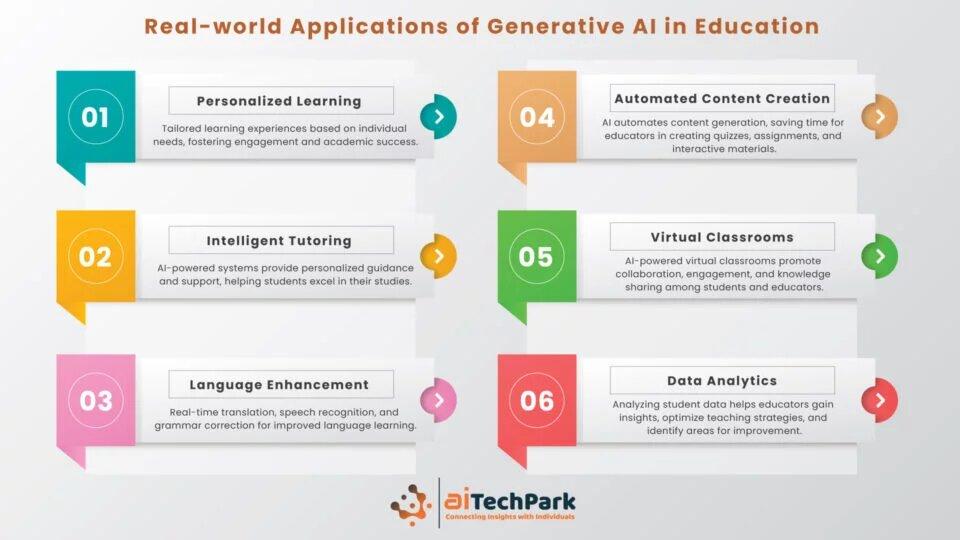As traditional classrooms make way for virtual spaces, there is a growing need for innovative solutions to enhance collaboration and engagement among students and educators. Collaboration lies at the heart of effective learning, and while e-education offers flexibility and convenience, it can sometimes lack the dynamic interaction found in physical classrooms. Enter generative AI, a powerful tool that holds immense potential in bridging this gap. By harnessing the capabilities of artificial intelligence, we can create virtual environments that foster meaningful collaboration, stimulate critical thinking, and encourage active participation.
In this interactive journey, we will embark on a quest to discover how generative AI can revolutionize virtual classrooms. We will explore its ability to facilitate real-time communication, personalize learning experiences, and provide intelligent feedback to students.
So let’s get started!
Visit AITechPark for cutting-edge Tech Trends around AI, ML, Cybersecurity, along with AITech News, and timely updates from industry professionals!
- Challenges in Collaboration in Virtual Classrooms
There are various challenges in virtual classrooms that students and teachers face alike. Let’s explore them a little more in-depth below:
1.1 Lack of Face-To-Face Interaction
One of the key challenges in virtual classrooms is the absence of traditional face-to-face interaction. In physical classrooms, students and educators have the advantage of non-verbal cues, body language, and facial expressions, which contribute to effective communication and understanding. However, in virtual environments, these visual cues may be limited or altogether absent. As a result, building rapport, gauging emotions, and establishing a sense of connection can become more challenging. This lack of face-to-face interaction may hinder collaboration, making it difficult for students to develop meaningful relationships with their peers and instructors.
1.2 Communication Barriers
Effective communication is the cornerstone of collaboration, yet virtual classrooms can present unique communication barriers. Technical glitches, such as poor audio or video quality, can disrupt the flow of conversation and hinder comprehension. Additionally, students and educators may face challenges in expressing themselves clearly due to the absence of immediate feedback or the inability to gauge the reactions of others. Misunderstandings and misinterpretations may arise more frequently in virtual environments, impeding effective collaboration and knowledge sharing.
Visit AITechPark for cutting-edge Tech Trends around AI, ML, Cybersecurity, along with AITech News, and timely updates from industry professionals!

